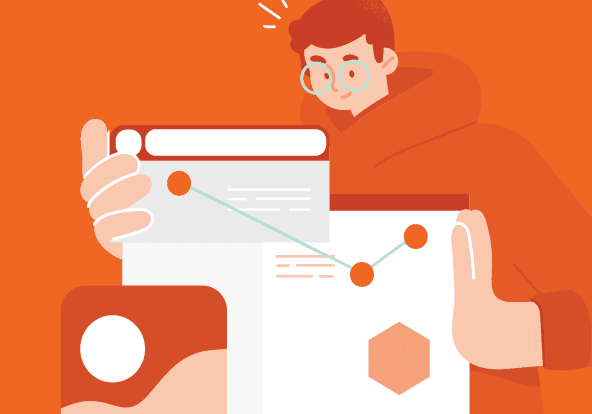Producing Meaningful Creative in a Data-Driven World

August 19, 2021

Big data is so pervasive in business today that some pundits think the focus on data-driven marketing has stifled a more free-spirited approach to planning and executing campaigns. The reality is that there’s a huge opportunity for data to inform creative in new ways. Let’s explore what some experts are calling data-inspired creativity.
Generally speaking, marketing professionals look at a limited set of metrics to determine whether their content is resonating with their target audience. Particularly with email marketing, as long as the email open and click-through rates are within established industry averages, most CMOs are satisfied.
In the earlier days of digital advertising, creative agencies would help organizations build personas to encapsulate the characteristics of their target audiences. Then, creative content would be developed for a particular product to speak to that persona. The agencies largely controlled the personas and the creative and would experiment over time with what worked to bolster the brand and drive sales. Click-through rates of half a percent were considered pretty good.
Enter big data and identity marketing. Now, there’s data for every aspect of marketing and advertising, and many organizations have gone overboard with their expectations that every campaign will be wildly successful because it’s based on the data. Marketing budgets—and marketers’ jobs—are contingent on campaign outcomes, personalization, and targeting, while less emphasis is placed on creative content.
Collaboration required
While this might feel disillusioning for creative professionals, there’s a happy medium where creative marketers and data scientists bridge their silos and collaborate to produce the winning combination of content that drives both sales and awareness. That’s data-inspired creativity.
In this approach, the insights gleaned from data become the creative compass pointing to the content that engages customers. The granularity that comes from technology advances such as identity graphs makes it possible to tailor creative content in different ways for very specific audiences. Taking the time to craft those individualized messages will inevitably pay off with better results than the broad strokes of yesteryear, when a single creative approach had to reach a wider, more diverse audience.
This actually makes the job of creative marketer more compelling. Where some creatives might have been discouraged, now there’s an opportunity to flex more creative muscle to directly appeal to targeted buyers. It’s a more sophisticated way to connect with consumers using language and imagery that resonate. By pushing marketers out of their norms and expectations, data about consumer behaviors can help creative professionals step outside their own beliefs and build empathy with their buyers.
Play to each other’s strengths
Collaboration between marketers and data scientists is the foundation for emotional storytelling. Stories are one of the most powerful marketing tools because consumers can see themselves reflected in the scenario being described. The more specific and similar it is to their own circumstances, the more relatable it becomes. A gifted marketing storyteller will use data insights to craft the details of a highly relatable situation where a product or service provides the exact solution needed.
As data scientists and marketers work together, it’s important for each to understand the other’s strengths and not overstep. Data scientists specialize in decoding insights from huge swaths of data, whereas marketers will apply the right strategies to capitalize on those insights. Some examples of successful collaboration include:
- Creating a customer lifetime value model that can segment customers by their behavior
- Using predictive lead scoring based on algorithms that calculate the probability of conversion
- Performing sentiment analysis to discern customer beliefs, opinions, attitudes, and campaign engagement
- Producing information about real-time events so marketers use those situations to target customers
The case for internal creative
A side effect of the shift to data-inspired creativity is that more organizations are building their internal creative marketing capability rather than outsourcing it to agencies. The nature of identity-driven marketing that is undertaken with data scientists is that it needs to be rapidly adjusted as performance data comes in. The constant tweaking—a word here or an image there—is better suited for an internal team that can act quickly using a self-service ad-buying platform. The longer response time of an agency would be defeating.
Since massive amounts of data can be overwhelming, a good place to start is with one clearly defined data signal. Make sure it’s actionable; for example, consumer behavior that indicates they are about to make a purchase. Then, develop the creative that speaks to that consumer.
Marketers need to look beyond big data as a tool to simply optimize results. Optimization is important, but not if it only leads to doing what’s worked in the past. That’s a narrow approach that will only constrain creativity. Rather than allowing past results to dictate future actions, look at those results to inspire what you do next.
Ultimately, infusing creative with the right data at the right time will point marketers in the best direction to achieve their goals.
as originally published by DCMNY on 3/16/21


